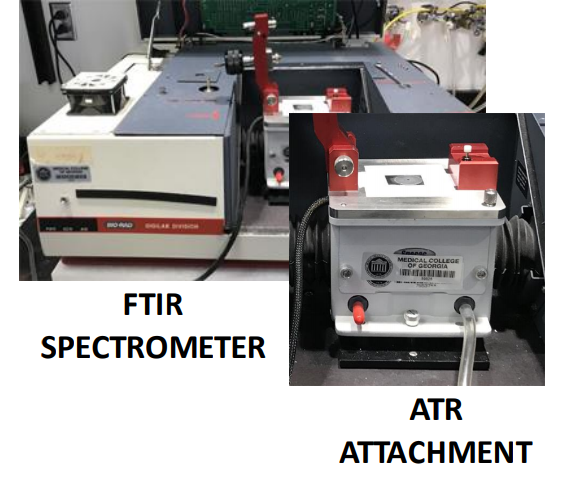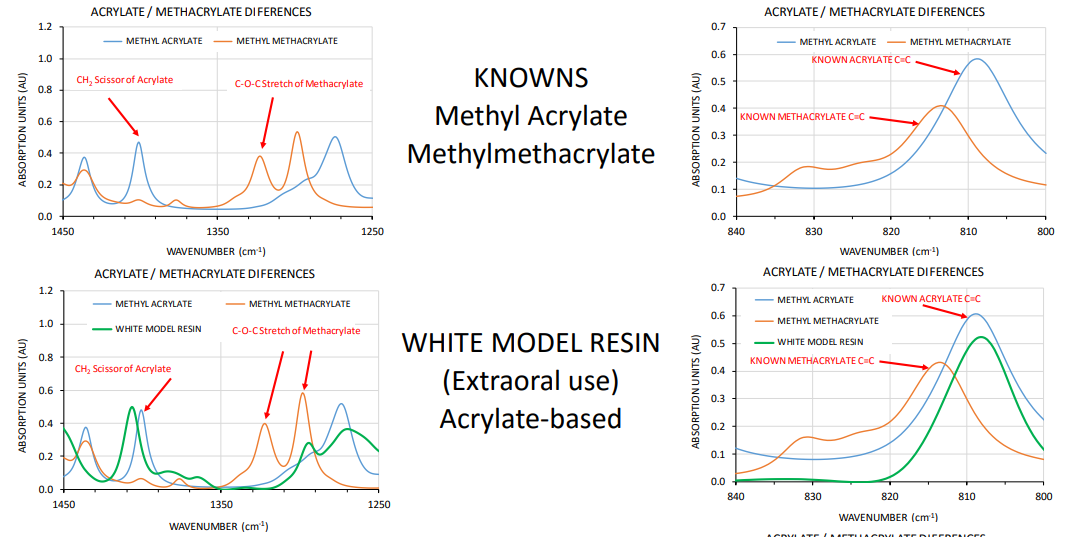Researchers from the Dental College of Georgia, Augusta University are delving further into 3D printing resins for the dental field, detailing their findings in the recently published ‘Acrylate/Methacrylate Content Among a Variety of 3D Printing Resins.’
Production processes and the level of speed have changed drastically for dentist’s offices today as they are able to fabricate a variety of restorative devices on-demand for patients. A number of dental 3D print resins have now been accepted by the FDA for intra-oral use, meaning that they are methacrylate-based, and less toxic; however, the researchers are quick to point out that the polymer itself is not cytotoxic—but the monomer composition could be.
“Although the FDA has approved some dental 3D printed formulations for clinical use, the duration that the device is expected to be in the oral environment is still a controlling factor,” explained the researchers.
Materials are categorized as follows:
- Class Ia materials (short term) – designated for use in a patient’s mouth such as surgical guides and impression trays
- Class IIa resins (long term) are approved for more extended intraoral wear, such as dentures and aligners.
“Currently there is an extremely wide variety of 3D printable resins from which to choose, and the exact composition/classification (acrylate/methacrylate) seems to be a well-guarded secret,” explain the authors. “However, because the ultimate physical and biocompatible properties of the printed form are the direct result of the extent of curing during the initial printing, as well (and most importantly) from the subsequent method used for post-curing of the printed item, knowledge of the composition of the resin material seems to be of primary clinical importance.”
This research focused on using an infrared spectroscopic analytical method for comparing commercial, 3D dental printable resins regarding both acrylate and methacrylate content. The researchers discovered that only one of the materials—white model resin—turned out to be strictly acrylic based, among the following:
- Methyl acrylate methylmethacrylate
- White model resin (extraoral use) acrylate-based
- Surgical guide resin (Intraoral use) methacrylate-based
- Orthodontic resin (Intraoral use) methacrylate-based acrylate-based
- Denture base resin (Intraoral use) methacrylate-based
- Gray model resin (extraoral use) methacrylate-based
“Some products demonstrated they were methacrylate-based (for intraoral use): Surgical guide, Denture base (for extraoral use), grey model resin,” concluded the researchers. “Surprisingly, one product indicated a possible mixture of acrylate and methacrylate-based resins: Ortho resin, designated for intraoral use.”
Materials for 3D printing—and especially resins—are the focus of much research today, from unique biodegradable resins to photopolymer resins, fast-curing methacrylate resins, and more. What do you think of this news? Let us know your thoughts! Join the discussion of this and other 3D printing topics at 3DPrintBoard.com.
[Source / Images: ‘Acrylate/Methacrylate Content Among a Variety of 3D Printing Resins’]Subscribe to Our Email Newsletter
Stay up-to-date on all the latest news from the 3D printing industry and receive information and offers from third party vendors.
Print Services
Upload your 3D Models and get them printed quickly and efficiently.
You May Also Like
Reinventing Reindustrialization: Why NAVWAR Project Manager Spencer Koroly Invented a Made-in-America 3D Printer
It has become virtually impossible to regularly follow additive manufacturing (AM) industry news and not stumble across the term “defense industrial base” (DIB), a concept encompassing all the many diverse...
Inside The Barnes Global Advisors’ Vision for a Stronger AM Ecosystem
As additive manufacturing (AM) continues to revolutionize the industrial landscape, Pittsburgh-based consultancy The Barnes Global Advisors (TBGA) is helping shape what that future looks like. As the largest independent AM...
Ruggedized: How USMC Innovation Officer Matt Pine Navigates 3D Printing in the Military
Disclaimer: Matt Pine’s views are not the views of the Department of Defense nor the U.S. Marine Corps Throughout this decade thus far, the military’s adoption of additive manufacturing (AM)...
U.S. Congress Calls Out 3D Printing in Proposal for Commercial Reserve Manufacturing Network
Last week, the U.S. House of Representatives’ Appropriations Committee moved the FY 2026 defense bill forward to the House floor. Included in the legislation is a $131 million proposal for...




































